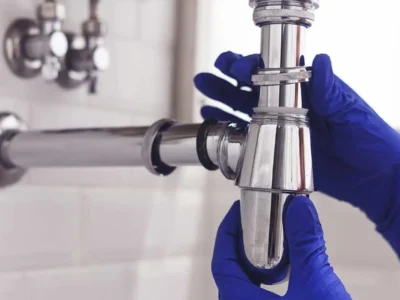During flood damage disaster cleanup, examining wooden structures for water damage is a critical step to ensure the safety and longevity of your property. Wood is highly vulnerable to moisture, and prolonged exposure can weaken the structure, cause warping, and lead to mold growth. Professional cleanup services focus on inspecting wooden beams, floors, and supports to identify any signs of damage. Early detection and treatment help prevent costly repairs in the future.
Here are five ways flood damage disaster cleanup services examine wooden structures for water damage.
Checking for warping and swelling
The first step in assessing wooden structures is checking for visible warping or swelling. When wood absorbs water, it expands and can distort its shape. Flood damage cleanup specialists carefully inspect floors, beams, and wooden supports for signs of unevenness, bulging, or bending. Any structural components that have warped may need to be dried and restored or replaced to prevent further damage.
Testing moisture levels
Professionals use moisture meters to measure the amount of water retained in wooden structures. High moisture content indicates that the wood has absorbed a significant amount of water, which can lead to future problems like rot or mold. By testing moisture levels, flood cleanup specialists can determine which areas need further drying and attention, ensuring the wood returns to its original condition safely.
Inspecting for mold growth
Wood exposed to moisture for extended periods is prone to mold growth, which weakens the wood and poses health risks. Cleanup teams carefully inspect wooden structures for signs of mold, such as dark spots, discoloration, or a musty odor. If mold is detected, they use specialized treatments to remove it and sanitize the affected areas, preventing it from spreading and causing further damage.
Examining structural integrity
Water exposure can weaken the strength of wooden beams and supports, compromising the safety of the building. Cleanup professionals assess the structural integrity of these components by checking for soft spots, cracks, or signs of wood rot. Any areas that have been compromised may require reinforcement or replacement to ensure the building remains stable.
Monitoring the drying process
To prevent further damage, professionals monitor the drying process closely. Dehumidifiers and air movers are used to remove excess moisture, but the drying must be gradual to avoid causing cracks or further warping. By regularly checking moisture levels during the drying process, specialists ensure that the wooden structures are dried properly and safely.
To sum up
Examining wooden structures for water damage during flood damage disaster cleanup involves checking for warping, testing moisture, inspecting for mold, assessing structural integrity, and monitoring the drying process.













Comments